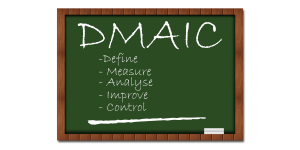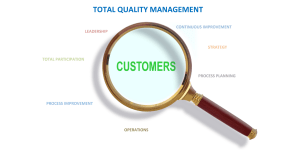Agile Management Methodology is a popular approach to managing teams and projects in today’s fast-paced business environment. It is a flexible and collaborative approach that allows teams to respond quickly to changing requirements and customer needs. In this blog post, we will explore the key principles of Agile, the benefits of using this methodology in team management, and some useful tools and tips for implementing it in your organization.
We will also discuss the pros and cons of Agile, and look at some examples of companies that have successfully adopted this approach. Whether you are a project manager, team leader, or simply interested in learning more about Agile, this post will provide you with valuable insights and practical advice.
Agile Methodology
Agile methodology is a project management approach that emphasizes flexibility, collaboration, and customer satisfaction. It is a way of managing complex projects that allows teams to adapt to changing requirements and deliver working software quickly. Agile is like a race car that can quickly change direction to avoid obstacles and stay on track.
It is all about being nimble and responsive to customer needs. With Agile, teams work in short sprints, usually two to four weeks, and deliver working software at the end of each sprint. One of the key principles of Agile is to prioritize customer satisfaction through continuous delivery of valuable software. This means that teams are always working on the most important features first, and they are constantly refining and improving the product based on customer feedback. Agile methodology is also highly collaborative.
Team members work closely together and communicate frequently to ensure that everyone is aligned and working towards the same goals. This helps to minimize misunderstandings and ensure that the project is on track. Another important aspect of Agile is the emphasis on continuous improvement. After each sprint, the team reflects on what went well and what they can improve. This allows them to make adjustments and refine their approach over time.
Overall, Agile methodology is a powerful approach to project management that emphasizes flexibility, collaboration, and customer satisfaction. It is well-suited for complex projects that require a high degree of adaptability and responsiveness.
Definition and Principles of Agile
Agile methodology is a modern and iterative approach to project management, which emphasizes flexibility and adaptability. It emerged in the software development industry as a response to the limitations of traditional project management methods, which were often too rigid and sequential to keep up with the fast-paced and ever-changing demands of the market.
The key principles of Agile include customer collaboration, continuous delivery, and rapid response to change. Agile teams prioritize delivering working software early and often, rather than trying to deliver a perfect product at the end of a long development cycle. This approach allows for more frequent feedback from customers and stakeholders, which helps to ensure that the end product meets their needs and expectations.
Agile methodology also emphasizes the importance of teamwork, self-organization, and transparency. Cross-functional teams work together closely and communicate frequently, sharing their progress and challenges with each other and with stakeholders. This promotes a culture of trust and collaboration, which helps to create a more productive and motivated team.
One of the most important aspects of Agile methodology is the use of sprints, which are short periods of time (usually 1-4 weeks) during which the team focuses on completing a specific set of tasks. Sprints help to break down larger projects into manageable pieces, which makes it easier to stay on track and adapt to changing requirements.
Overall, Agile methodology is a powerful tool for project management, which can help teams to work more efficiently and effectively. By following a few simple principles and embracing a culture of collaboration and adaptability, any team can achieve great results with Agile.
Benefits of Agile in Team Management
Agile methodology has gained widespread popularity for team management in recent years. This approach to project management allows for greater adaptability and flexibility, which can lead to a more efficient and effective team. Here are some of the key benefits of Agile in team management.
Improved Team Collaboration
Agile methodology emphasizes collaboration and communication among team members. By breaking down projects into smaller tasks and holding regular meetings to discuss progress, team members are more likely to work closely together towards a common goal. This can lead to a stronger sense of teamwork and a more supportive working environment.
Increased Flexibility
Agile methodology allows for greater flexibility in project management. As projects are broken down into smaller tasks, teams can adapt to changes in priorities or unexpected challenges more easily. This can help to prevent delays and keep projects on track.
Better Time Management
Agile methodology encourages teams to focus on delivering high-quality work in shorter periods of time. This can help to prevent projects from dragging on for too long and can lead to a more efficient use of resources. Additionally, by breaking down projects into smaller tasks, teams can better manage their time and ensure that each task is completed on schedule.
Increased Transparency
Agile methodology provides greater transparency into project management. By breaking down projects into smaller tasks and holding regular meetings to discuss progress, team members can stay up-to-date on the status of the project. This can help to prevent miscommunications and ensure that everyone is on the same page. In conclusion, Agile methodology offers many benefits for team management. By emphasizing collaboration, flexibility, time management, and transparency, teams can work more efficiently and effectively towards a common goal.
Tools & Tips for Implementing Agile Management Methodology
Agile management methodology is an approach that emphasizes flexibility and adaptability. It allows teams to work collaboratively, respond to change quickly, and deliver high-quality products. However, implementing agile management methodology can be challenging without the right tools and tips. Here are some essential tools and tips for successful implementation:
1. Use Agile Project Management Software Agile project management software helps teams collaborate, plan, and track progress in real-time. It enables teams to manage backlogs, sprints, and tasks efficiently. Some popular agile project management tools include Jira, Trello, and Asana.
2. Conduct Regular Stand-up Meetings Stand-up meetings are short, daily meetings where team members share updates on their progress, identify obstacles, and plan their next steps. It helps the team stay aligned and focused on their goals.
3. Encourage Continuous Feedback Continuous feedback is crucial to agile management methodology. It enables teams to make improvements and adapt to change quickly. Encourage team members to provide feedback regularly, and make sure to act on it promptly.
4. Emphasize Collaboration Agile management methodology is all about collaboration. Encourage team members to work together, share ideas, and support one another. It helps to foster a culture of innovation and creativity.
5. Prioritize User-Centered Design User-centered design is a critical aspect of agile management methodology. It involves understanding the needs and goals of your users and designing products that meet those needs. Make sure to involve users in the design process and prioritize their feedback. In conclusion, implementing agile management methodology requires the right tools and tips.
By using agile project management software, conducting regular stand-up meetings, encouraging continuous feedback, emphasizing collaboration, and prioritizing user-centered design, your team can successfully implement agile management methodology and deliver high-quality products.
Pros and Cons of Agile Management Methodology
Agile management methodology has been gaining popularity in recent times due to its flexibility and adaptability to changing requirements. It is a project management approach that emphasizes teamwork, customer satisfaction, and continuous improvement. However, like any other management methodology, it has its upsides and downsides. In this section, we will analyze the pros and cons of agile management methodology.
Pros:
- Flexibility: Agile methodology allows for flexibility in project planning, execution, and delivery. It promotes adaptability to changing requirements, which is especially useful in dynamic environments, where requirements are likely to change frequently.
- Customer Satisfaction: Agile methodology prioritizes customer satisfaction by involving them in the development process. Customers are encouraged to provide feedback on the product throughout the development cycle, which ensures that the final product meets their needs and expectations.
- Teamwork: Agile methodology emphasizes teamwork and collaboration, which fosters a sense of ownership and accountability among team members. It also promotes knowledge sharing and cross-functional training, which leads to a more skilled and versatile team.
- Continuous Improvement: Agile methodology encourages continuous improvement through regular feedback and retrospectives. The team reflects on their performance and identifies areas for improvement, which leads to a more effective and efficient development process.
Cons:
- Uncertainty: Agile methodology is based on the assumption that requirements will change, which can lead to uncertainty and unpredictability. This can be challenging for teams that are used to working in a more structured and predictable environment.
- Time Management: Agile methodology places less emphasis on upfront planning and more emphasis on just-in-time planning. This can make it difficult to manage timelines and deadlines, especially if the team is not disciplined and/or the project is complex.
- Customer Availability: Agile methodology requires customer involvement throughout the development cycle, which can be challenging if the customer is not available or responsive. This can lead to delays and/or misunderstandings about the product requirements.
- Documentation: Agile methodology places less emphasis on documentation and more emphasis on working software. This can be challenging for organizations that require extensive documentation for regulatory or compliance reasons.
In conclusion, agile management methodology is a project management approach that has its advantages and disadvantages. It is essential to evaluate the suitability of the methodology for the project at hand and to consider its pros and cons before making a decision.
Examples of companies that use Agile Methodology
Agile methodology has become popular among businesses of all sizes and industries. Its flexibility and adaptability make it an ideal approach in a constantly changing marketplace. Here are some examples of companies that use Agile methodology to achieve success:
1. Spotify: This music streaming giant uses Agile methodology to develop and improve its platform. They organize their development teams into small, self-managing “squads” that work on specific features.
2. Microsoft: Microsoft uses Agile methodology to manage its software development projects. They have adopted the Scrum framework, which emphasizes teamwork, communication, and iterative development.
3. Amazon: Amazon uses Agile methodology to manage its e-commerce platform development. They follow a hybrid approach that combines Agile principles with their own unique processes.
4. IBM: IBM has been using Agile methodology for over a decade. They use Agile to develop software, hardware, and services. They have also developed their own Agile framework, called Disciplined Agile Delivery (DAD).
5. Salesforce: Salesforce uses Agile methodology to develop its cloud-based customer relationship management (CRM) platform. They use a modified version of the Scrum framework and emphasize collaboration and customer feedback. These are just a few examples of companies that have successfully implemented Agile methodology.
By embracing this approach, these companies have been able to deliver high-quality products and services more efficiently, while also improving communication, collaboration, and innovation within their teams.
Conclusion: Agile Management Methodology
In conclusion, Agile management methodology has become a popular and effective approach for team management in recent years. Its principles and benefits have been proven to increase productivity, collaboration, and overall success in project management. While there are some cons to consider, the pros outweigh them, especially when implemented with the right tools and tips.
Many successful companies, such as Amazon, Microsoft, and Spotify, have adopted Agile methodology as part of their project management process. If you’re looking for a way to improve your team’s productivity and collaboration, Agile methodology is definitely worth considering. With its flexible and adaptable approach, it can be tailored to fit any project or team dynamic. Ultimately, Agile management methodology is a great way to achieve success in team management, and it’s here to stay in the world of project management.












